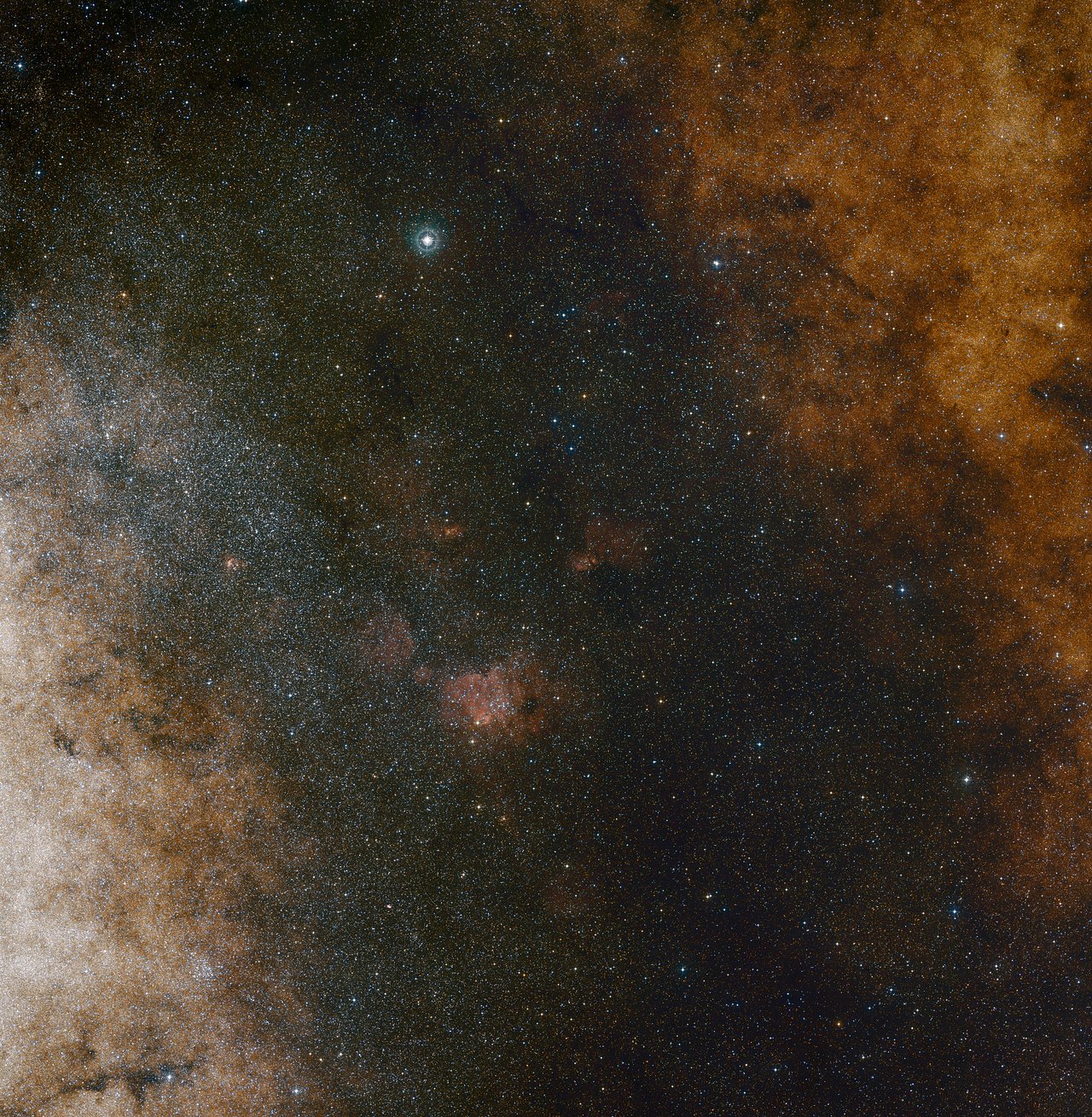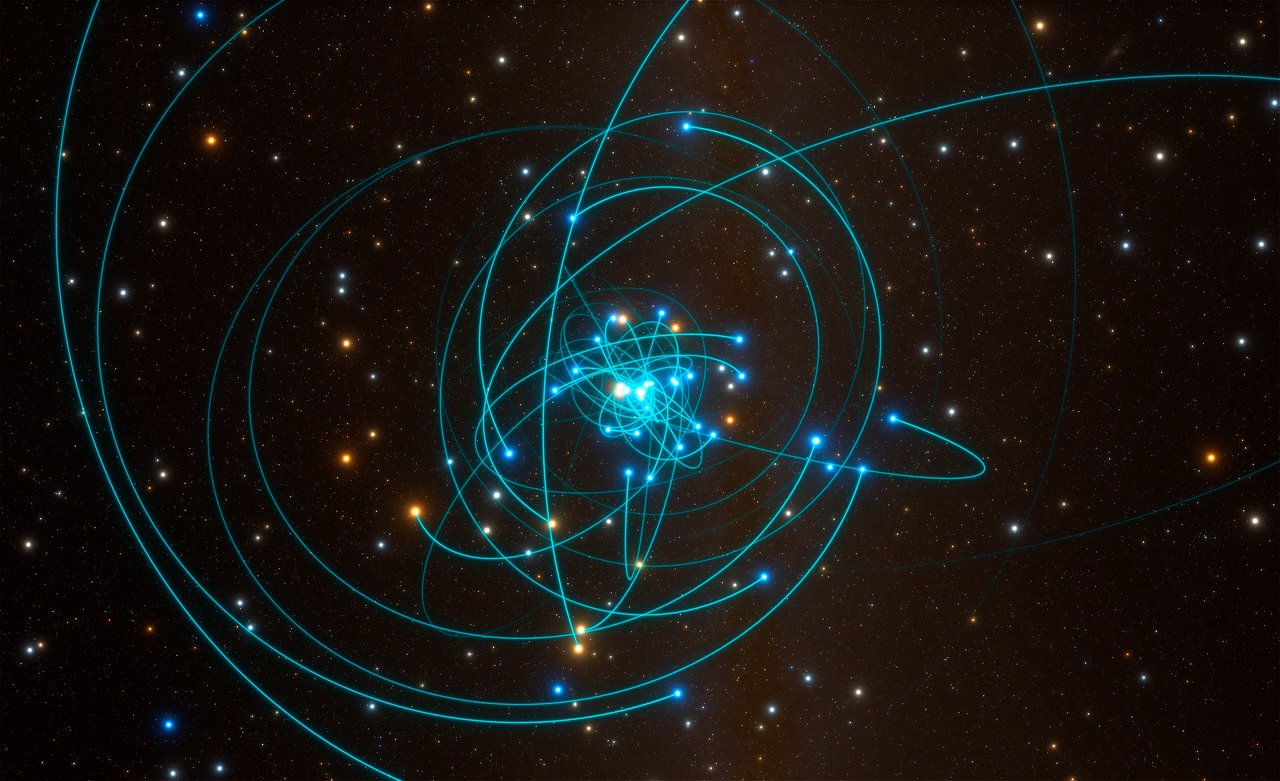Image List
-

This wide-field view of the center of our Milky Way galaxy shows, in visible light, the vast array of stars contained within this small space. The stars closest to the center of the galaxy, known as S-stars, are orbiting SgrA*, a massive black hole. The orbits of these stars are helping scientists to better understand the black hole and the nature of our galaxy. This view was created from photographs in red and blue light and forming part of the Digitized Sky Survey 2. The field of view is approximately 3.5 degrees x 3.6 degrees.
ESO and Digitized Sky Survey 2. Acknowledgment: Davide De Martin and S. Guisard -

This image is part of a simulation showing the orbits of stars very close to the supermassive black hole at the heart of the Milky Way. Observing the stellar orbits of these stars, known as S-stars, allowed scientists to measure the spin of SgrA* and determine that it doesn't have a jet.
ESO/L. Calçada/spaceengine.org